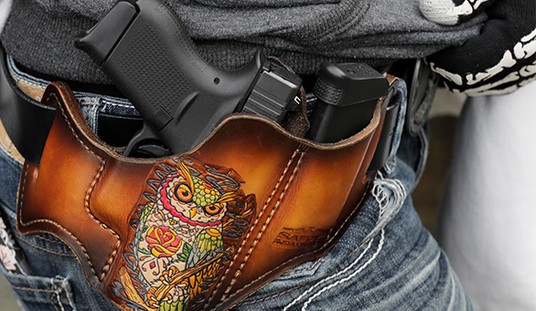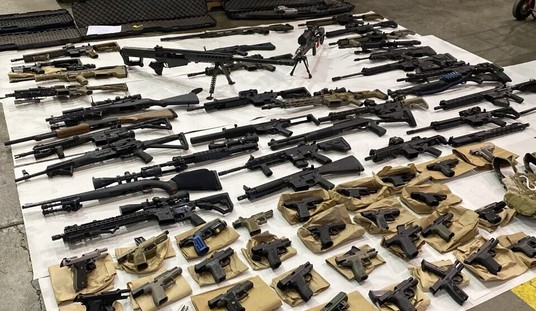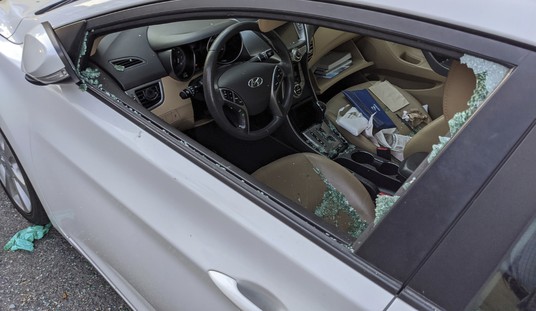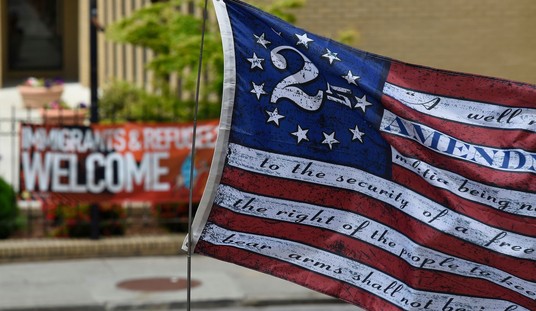When Bob first invited me to post at Bearing Arms, I led off with an article entitled “Why Do You Bear Arms?” In it, I said:
…Closer to the age of 70 than 60, I know or have known people who bear or have borne arms for a variety of reasons. For some it’s to carry out national policy in military service. For some it’s to enforce local, state, or federal laws. For some it’s to put food on the table. For some it’s to participate in this month’s match.
Some claim to do so openly to educate others about the right.
For me and for many others it’s primarily for defense of self, family, and home…
For about two decades, I criss-crossed the nation taking firearms training; in overlapping years I also offered it. I was disappointed to see that much of it actually seems more sought and oriented toward improving scores in monthly IPSC of IDPA matches or in periodic agency “qualifications” than toward the reality of those most likely scenarios that will actually justify the use of deadly force.
I came to regard a great deal of training offered as “range-oriented” and, to the extent that my limited facilities as a part-time instructor allowed, sought to make the training that I offered as street-oriented as practical. Even instructors with the best intentions of training you for real combat are often guilty of “range mentality.” This will generally fall into one of three categories. One category is teaching things certain ways because it is perceived to be safer that way, particularly when training numerous students at a time. Another is a manifestation of the observation by Abraham Maslow, “If the only tool you have is a hammer, you tend to see every problem as a nail.” In other words, if this is a shooting class, we will assume that every threat is best countered by shooting. A third is the attitude that if it is not practical to create the scenario on the range, we don’t need to worry about it happening on the street.

[continues on next page]
A couple of examples from the first category:
- Placing the non-gun hand on the belly to initiate the draw stroke: When you’ve got a line of students drawing to fire two-handed, this reduces the likelihood of the muzzle crossing the support hand as the gun clears the holster and starts forward. It also conditions the student to draw his hand back from where he may need it to deflect an attack, aim a flashlight or some other crucial task in a real fight.
- Going to “low ready” and scanning left and right after firing the assigned number of shots: Giving the student the sense that he is maintaining awareness of his environment, while standing on the exact spot from which he has just fired keeps him from crossing his classmates with the muzzle and from bumping into them. However, it makes more sense on the street to “shoot and scoot,” rather than remaining where the person who drew your fire – and possibly his unseen partners – know you are standing.

A good example from the second category:
Position sul: Sul is Portuguese for “south” and this technique, when executed correctly, points the muzzle “south,” toward the ground, on a line that runs between the feet. It allows the student to move safely around the range in any direction, without the muzzle crossing his classmates, his instructor or his own feet. Sul is a slick range technique as you basically fold into it from the currently popular thumbs-forward, two-handed grip of the pistol, then unfold back to the shooting position, as needed. The problem is that it traps a perfectly good hand – that might otherwise fend off an arm’s length assailant, operate a flashlight, open a door, etc. – behind the gun. Anyone who carries a gun for serious purposes ought to be able to hit reliably one-handed at least out to four yards. It makes more street sense to place the gun in the same position in a one-handed grip and leave the other hand free for other tasks that may arise.
[continues on next page]

Perhaps the best example of the third category is the use of stationary, two-dimensional targets:
Most range training is conducted with stationary targets. This promotes the illusion that an assailant will stand planted somewhere around seven yards from you while he gives you the legal justification to use deadly force. Standing planted in the same spot place as you draw to engage the threat also assumes that the threat will give you the time to draw, assume your normal two-handed grip and press off a shot or two.
Then there is the issue of the targets themselves. The traditional black silhouette B-27 target is larger than most men, faces you squarely and places the highest value for a shot to the stomach, not the most effective organ for producing quick incapacitation. Some schools use the buff-colored cardboard silhouettes from the action-shooting sports. These may be closer to average size and have their scoring zones better situated but they have little resemblance to members of your own species, against whom you may have some innate reluctance to use deadly force. Some of these issues may be ameliorated with full-color photographic targets, which are available in a wide variety of poses and scenarios. Among other things, these more realistic targets may help desensitize you to shooting another human.
A final issue with these two-dimensional targets is that one needs to imagine them as three-dimensional and analyze which organs a bullet would actually reach, if fired from different angles. For example, if one wishes to place the bullet in the vicinity of the upper chambers of the heart, the entry hole on the printed photograph would need to shift laterally as the shooter moves laterally, assuming that the training regimen incorporates lateral movement.
Force-on-force training and interactive video simulators overcome many of these problems but they are not typically available on a routine basis. Long story short, don’t take the instructor at his word. Use your own common sense and ask yourself if what you are being taught would work if someone were charging you, yelling that he’s going to rip your head off, or if he actually had a real firearm with which to shoot back.
Don’t forget that if an instructor tells you that it is not safe for you to practice something on the range, it’s probably not safe for you to do it on the street. I began my formal teaching career with a school that advocated the use of a “high-ready” position, on the basis that it was easier to defend from a disarming attempt. However, the school would not allow the use of that high-ready technique on the range, for safety reasons! An instructor either needs to figure out how to do it safely on the range or he needs to teach you a technique that is safe to do on the street. And don’t forget that safety on the street includes the probability that you will prevail in the encounter that you cannot avoid.
(I’m fairly sure that there will be comments arguing the training value of IPSC or IDPA competition. I do not have a Facebook account and cannot respond to comments here.
If you wish to discuss these or other concepts with me, a click on the link to my own website – in the author information, below – will offer you links that can be used to send me e-mail.)








Join the conversation as a VIP Member